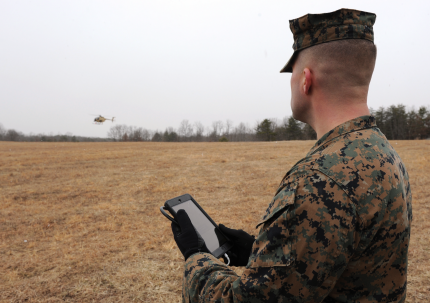ONR adds $11M to tablet-controlled autonomous helicopter program
Aurora Flight Sciences will continue tests on the AACUS program, in which unmanned rotorcraft deliver supplies to small units in dangerous environments.

ONR has awarded Aurora Flight Sciences an $11.1 million contract modification for work on the Autonomous Aerial Cargo I Utility System (AACUS), which uses LIDAR and electro-optical/infrared sensors, along with some advanced algorithms, to allow unmanned helicopters to navigate difficult environments such as snow, fog or sandstorms, and identify blocked landing sites.
The Marines tested AACUS in April 2014 at Quantico with K-MAX and MH-6 Little Bird helicopters. One advantage of the system is that is requires very little training—users need only use the tablet’s interface to select a landing spot and AACUS does the rest. If it detects a blocked landing site, it notifies the user to select another site.
“With AACUS, an unmanned helicopter takes the supplies from the base, picks out the optimal route and best landing site closest to the warfighters, lands, and returns to base once the resupply is complete—all with the single touch of a handheld tablet,” Rear Adm. Matthew Klunder, chief of Naval Research, said at the time of those tests.
The program was started in 2012, with the goal of enabling unmanned vertical take-off and landing cargo delivery to small units in situations that would pose a risk to manned cargo flights. Lockheed Martin also has worked on development, along with Aurora.
The contract modification is to continue flight testing and development of AACUS across a variety of unmanned and manned systems. Work under the contract is expected to be completed by the end of February 2017.
NEXT STORY: Air Force to ID targets by their vibrations



